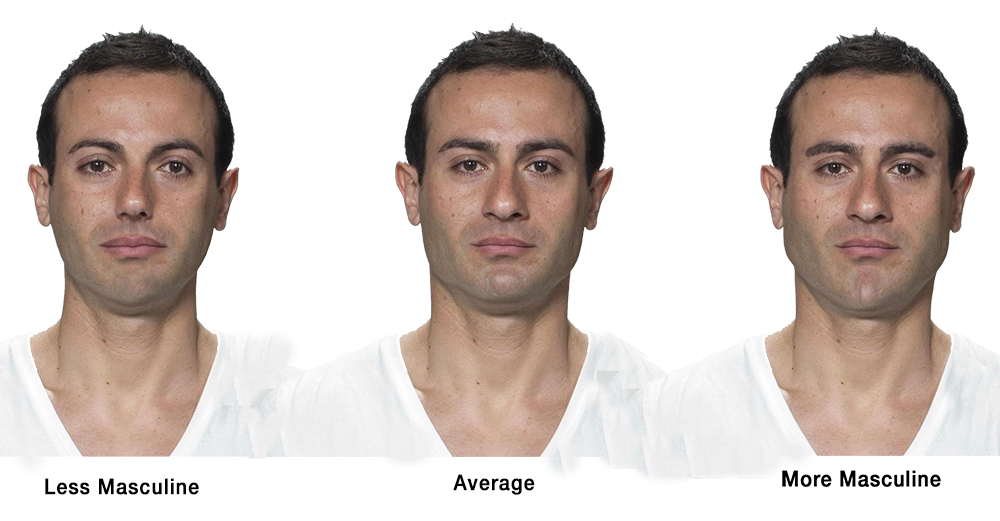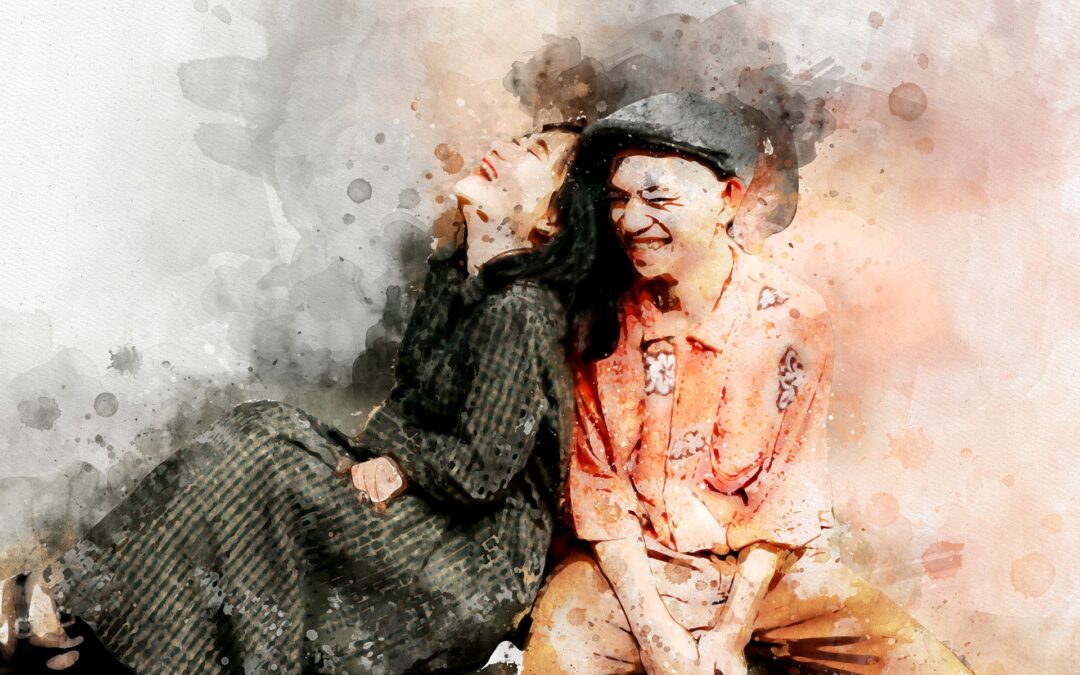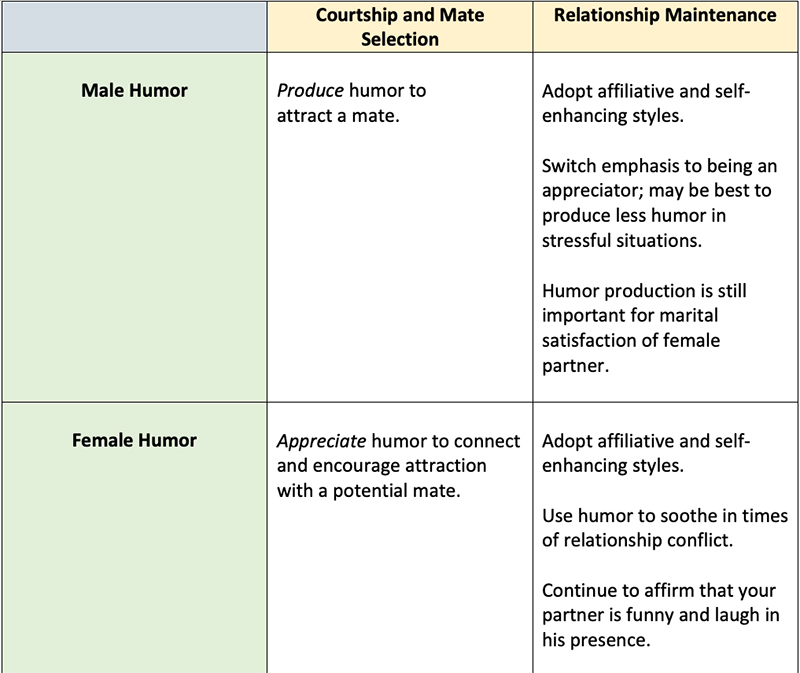the”‘“Feminists insist that men’s greater demand for sexual activity is an outdated myth. Recent sex surveys prove the myth to be a fact and one that the social sciences have yet to address.”
~ Catherine Hakim
Men want more sex than women (in statistical aggregate with individual differences). This is not a criticism of men or a judgment of women. This is just the way it is. We were designed this way over eons of time. The fact that men want more sex than women comports directly with the evolutionary evidence of sexual selection and the science of human mating. It reflects and is predicted by the difference between the sexual excitation system dominant in men versus the sexual inhibition system dominant in women. (See prior posts.) Only the questioning of this fact seems surprising.
Unsatisfying Sex Does Not Account for the Deficit
I have recently written about why heterosexual women may not want the sex they are being offered (Why Women Are Bored in Monogamous Relationships and Addressing Barriers to Female Sexual Pleasure – Let’s Get Educated). But the prospect of unsatisfying sex does not account for the disparity of desire between men and women and ultimately the male sex deficit. The “male sexual deficit” (also called surplus male sexuality) is the condition of men not getting enough sex.
The Male Sexual Deficit is Caused By:
- Women generally have a lower sex drive (sexual motivation) — the predominance of their sexual inhibition system (responsive desire). Men have a higher need for sexual activity and a need for more variety of sexual partners.
- Women find only a few men “suitable.” Female selectivity is a critical sex difference and evolutionary adaptation. The criteria of mate choice in a woman’s long-term mating strategy reveals “choosiness” for a narrow cluster of traits that define a “suitable” mate. Related to “suitability,” there is a wide attraction disparity between men and women; men find a majority of women attractive; women find the majority of men unattractive. (This fact is mostly undiscussable in the dating advice marketplace.)
- A severe supply and demand imbalance in the mating market that disadvantages men – the result of a lower female sex drive and “choosiness.” Available and willing women are in short supply compared to the significant demand by interested men.
- Women often do not want the “kind of sex” offered by their male partner, causing relative boredom, disinterest, and reduced sexual activity.
- There is an increase in the percentage of women who identify as lesbian or bi-sexual in practice. Female sexual fluidity is growing. Women’s inherent sexual plasticity is leaving men on the sidelines.
Male Sexual Deficit in the Twenty-First Century
This post is named after and draws from a paper written by British sociologist Catherine Hakim. It also captures the wisdom of evolutionary psychologists pertinent to this topic, primarily the work of David Buss. (See bios in the Appendix.)
Hakim describes the sexual deficit among men as a universal phenomenon in modern societies. This phenomenon “emerged” during her research on sexual cultures, internet dating, and marriage markets.
Harbingers and Evidence of the Deficit: Sex Differentials Around the World
“The sex differentials in sexuality remain large, substantively important, and are found in all cultures, including the sexually liberated societies of Scandinavia.” ~ Catherine Hakim
Hakim reviewed studies conducted worldwide over the last 30 years and reported a long list of “sex differentials” between men and women. Below are just a few examples from various countries.
- The most commonly reported sexual problem is the lack of interest in having sex. In all countries, the rate of women is at least double the rate for men at all ages.
- Men are four times more likely than women to agree to sexual approaches from their partner (38% of men versus 11% in Finland).
- A majority of women regard love as a precondition for sex, while a majority of men reject the idea. (Sweden)
- Men express two to ten times more enthusiasm for trying every variation in sexual activity. (Britain)
- Men are three times more likely to prefer several concurrent lovers. (Estonia and Sweden)
- Regular masturbation is two to three times more common among men in Sweden, Australia, Finland, and Britain.
- Men are three times more likely to have frequent sexual fantasies and to use erotica of all kinds.
- Casual sex was regarded as acceptable by a two-thirds majority of men vs. a one-third majority of women in Britain.
- Men reported extra-marital affairs twice as often as women. Only in France, Spain and Italy do men and women begin to converge in their acceptance and practice of affairs.
A cross-cultural study of 29 countries showed that sex differences in desire and sexual interest are universal, but the gap between men and women is larger in male-dominated cultures than in liberal western democracies.
Male Sexual Deficit in the United States
Denise Donnelly (University of New Hampshire) analyzed a sample of 6,029 married persons in the United States to determine the correlates of sexual inactivity in marriage and to see if sexually inactive marriages were less happy and stable than those with sexual activity. Donnelly found that about 1 in 7 marriages in the U.S. are largely “sexless” — characterized by little to no sexual intimacy (“dead bedrooms” is a popular subreddit). Typically, this happens because one member of the relationship refuses to engage in sex. It is most often the woman. Although sexually inactive marriages are not uncommon, Donnelly concluded that they are not happy or stable marriages. Thus, lack of sexual activity may be a danger signal for many marriages.
Adverse Effects of Male Sex deficit
Hakim believes the male sexual drought negatively affects society, fracturing families and potentially leading to violence and crime.
Hakim says, with some controversy, that the male sexual deficit helps to explain sexual harassment, sexual violence, rape, infidelity, and a rising demand for commercial sexual services that is almost exclusively male. (Below, I will provide some contrary and perhaps more reliable evidence about sexual coercion from evolutionary psychology.)
Commercial Sex Services Demonstrate the Deficit
Commercial sex services have existed in all societies, whether they are treated as legitimate or not. The male sexual deficit explains why, in all societies, customers for the sex industry are men almost exclusively. For instance, in Greece and Italy, 40% of men have bought sexual services compared to less than 1% of women.
An International Labor Office (ILO) study of the sex industry found that demand for erotic services grows as a country (or individual) becomes more affluent; therefore, overall demand is rising.
Demand for such services from women is minuscule in all cultures, and this is not due to women’s lack of economic resources. Some poor men will find the money if necessary but affluent women are rarely tempted. The sex industry has always been highly stratified, with a diversity of services at all price levels, because male demand exists at all income levels.
Sex Work is Lucrative But Not a Cure for the Deficit
Men’s ambivalence towards women working in the sexual entertainment industry may be because women exploit men’s “weakness” effectively. Women can earn 10 – 40 times more than in conventional jobs. The sex industry is the sine qua non of the “erotic-economic” bargain but does not significantly depress the male sexual deficit. (See “Erotic-Economic Bargain — the Ultimate Exchange in the Mating Economy” in Dynamics in the Mating Economy – Domain #1 of Male-Female Difference.)
Cause #1 of the Deficit: Lower Female Sex Drive
“This gap in desire between men and women is seen in every country and culture where sex surveys have been done. The received wisdom that men always want more sex than their wives is not a stereotype, but a fact.” ~ Catherine Hakim
Measure of Desire in Developed Countries
Inside Hakim’s data set, Finnish sociologist and sexologist Osmo Kontula identified (2009) 12 measures of sexual desire (see Appendix) and offers this summary of four decades of sex research in developed countries:
- Younger men experience sexual desire twice as frequently as women.
- Older men experience sexual desire four times as often as women in the same age group.
- As a result, male sexual desire is compatible with the level of desire in women approximately 20 years younger.
- Overall, male sexual desire is manifested at least twice as often as female desire, and men would like to have sex twice as often as women.
- The gap in sexual desire between men and women grows over time.
Female Sex Drive Is More Plastic
The national surveys on sex differences around the globe are corroborated by more detailed studies of the sex drive by Roy Baumeister and other social psychologists. Those surveys suggest the differences in sexuality between the sexes may be due to the female sex drive being more plastic, malleable, and responsive to social influences (See Cause #5 below), whereas the male sex drive is less compliant (Baumeister, 2000, 2004).
Women’s Lower Interest Is Not a Disorder
Marta Meana, clinical psychologist and researcher in women’s sexuality, concluded (2010) that discrepancies of sexual desire within relationships are the norm rather than the exception, generally due to the woman’s lower interest in sexual activity. She says clinicians should not treat this as a sexual disorder since very few women are distressed by their lack of desire per se. Instead, they are worried about the impact on their relationships.
Men Want More Sex Partners – More Evidence of the Deficit
Evolutionary psychologist David Schmitt (2003) studied 16,288 individuals residing in 52 nations (2003) and found sex differences to be culturally universal without a single exception. Men said they wanted 1.87 sex partners over the next month; women wanted only .78. Over the next decade, men said they wanted six partners on average; women said they wanted two. In Middle East countries, such as Lebanon and Turkey, men wanted 2.5 sex partners over the next month. In South America, 35% of men wanted more than one sex partner over the next month, but only 6% of women did. In Japan, where levels of sex drive appear to be unusually low, six times more men (18%) than women (2.6%) wanted more than one sex partner.
Sex Difference in Rates of Infidelity is Narrowing
The infidelity rate between men and women has narrowed since sexologist Alfred Kinsey found (in 1953) that twice as many men as women had experienced at least one sexual infidelity (50% vs. 26%). Recent studies show that men cheat with a larger number of partners, and women are choosier even in this domain, typically having a single affair. And of those women, 70% cite love or emotional connection as the key reason for the affair. This finding points more toward the mate-switching function of female infidelity than a woman’s desire for sexual variety. (See Mate Switching Hypothesis.) Men’s affairs are more motivated by sex with someone new, especially if they have no sex at home.
Consenting to Sex with Strangers – Sex Differences
Studies of consenting to have sex with strangers found that 75% of men approached by female confederates said “yes” to the question: “will you go to bed with me tonight?” Nearly 100% of women said “no way” to the request from male confederates. Most men who declined asked for a raincheck. (The first study was done in Florida in 1989; it was later replicated in Austria, Denmark, and the Netherlands.)
“The psychological and behavioral evidence all points to the same conclusion,” says Buss, “men and women differ profoundly in their desire for sexual variety.” (As explained in Why Women Are Bored in Monogamous Relationships, a woman may need or want a variety of experiences with the same partner.)
Unfulfilled Longings
“The large and profound sex difference in the desire for variety is not something that merely rattles around in men’s heads,” says Buss. “Many men are burdened by lust for a variety of different women, constant cravings that cannot ever be fully satisfied. Sexual desire sometimes bursts forth into action.” It explains the philandering of such men like Hugh Grant, Arnold Schwarzenegger, and Charlie Sheen, who had wives or girlfriends and presumedly were not experiencing much sexual deficit. But “it also explains,” says Buss, “the rage of ‘incels,’ whose sexual desires remain forever unfulfilled as they watch women they want from the sidelines of the mating market.”
Men Have a Higher Sex Drive – Period
“Evolution has equipped men with a higher sex drive,” says Buss. This is reflected in several sexual adaptations:
- Men become sexually aroused more easily than women, especially to visual stimuli.
- Men have more frequent and spontaneous sexual fantasies.
- Men spontaneously think about sex twice as often as women do every day.
- Men desire to have sex more frequently than do women.
- Men average 679 circulating units of testosterone; women’s average is a tenth of that.
“In short,” says Buss, “the gender differences in sex drive create a gap. The less interested person has more power over if and when sex will occur, and women are often less interested.”
Causes # 2 and 3 of the Deficit: Female Choosiness and the Mating Marketplace
“Female choosiness – deciding who qualifies for interaction, relationship escalation, and sexual access is a first principle in human mating. ~ David Buss
Women find few men “suitable” as mates. Female “choosiness” coupled with a lower sex drive creates a severe supply and demand imbalance in the mating market that disadvantages men. Women who are available and willing are in short supply compared to the great demand by interested men. As a result, many men lose out or opt-out of the market, causing a vast “surplus” of male sexuality. “It is precisely this female selectivity,” says Buss, “that creates sexual conflict, sometimes expressed as resentment by those who fall below the threshold.”
Women Liked Very Few Profiles
Buss cites a study that placed 14 fake male and female profiles on Tinder and analyzed the responses to them. Over eight thousand (8,288) men liked the female profiles, compared to just 532 women who liked the male profiles. Although men on Tinder swiped right on hundreds of female profiles, fewer than 1% of women reciprocated that liking.
Few Women Actually On Ashley Madison
Investigative research revealed that 99% of female profiles on Ashley Madison were fake. In reality, although there were 20 million men actively using the cheating site, only 1,492 women, less than 1% of the total user base, actively used the site.
Examples of Female Choosiness
Buss shares the story of a female friend who tried online dating. She was described as a successful, intelligent, and attractive academic, no doubt with high mate value. She received more than 500 responses in two weeks. However, after the end of her exhaustive screening process, she sent only one reply out of the 500. And after a coffee date with him, “she concluded he did not exceed threshold.” Another woman told Buss that she used Tinder and swiped right on less than .8 % of the men she saw and met only .6 % of that group, resulting in a .005 % of the total men she saw.
Attraction Disparity – the Pernicious Underbelly of the Deficit
The choosiness and caution demonstrated by women as compared to men are reiterated in Buss’s new book: When Men Behave Badly. Buss found that men, on average, find women more attractive than women find men attractive. The difference is BIG!
In a study, men rated women’s attractiveness along a bell curve. Sixty (60) percent of the women were rated by men as “average” to “very attractive.” The women rated only 17% of the men from “average” to “attractive.” Women rated 58% of the men as below threshold or unattractive. Ouch.
Eons of Sexual Selection Demonstrate the Disparity
The attraction disparity is demonstrated by eons of sexual selection for the alpha male and men’s behavioral co-evolution to acquire hierarchal power and social status to be that alpha male. Attraction disparity gives women the upper hand in the sexual marketplace.
Men Lower Their Standards
Contributing to the attractive threshold gap is men’s willingness to lower their standards for casual sexual encounters. Men are willing to date down when it comes to sex.
Supply and Demand Forces in the Mating Marketplace
In the human mating economy, men primarily sell, and women mostly buy; this is the predominant evolutionary dynamic. Thus, the buyer (female chooser) significantly controls the marketplace.
All mate selection behaviors are driven by supply and demand forces for sexual access to the best or highest-mate-value mates. Fertile (and consensually most “beautiful”) women are in great demand, and the supply of men interested in them creates significant differences in behavioral dynamics – leading to a multitude of male initiation strategies, misreading of signals by women (male “over-perception bias”), and a reproductive variance curve.
Most Men Want the Same Women
Simply said, roughly 80% of men compete for 20% or less of the same (highest mate value) women in the overall mating economy. Interested men are plentiful in this market (as driven by biological-hormonal imperatives), and receptive women are scarce. Supply and demand forces skew odds in favor of female choice and dramatically work against the odds of a man being chosen.
Pursuer and Pursued “Are Not” The Same People
The 180% difference between a buyer and a seller in the mating-sexual economy is dramatic in its psychological impact. It affects motivation, the origination of desire, perceptions of risk and safety, and ultimately the experience of sexual scarcity or abundance.
The psychology (lived experience) of the sexual initiator and pursuer is vastly different than the psychology of the one pursued and the one who chooses among her pursuers. This general difference between men and women cannot be overstated. (See “We Are Not the Same People” in Appendix)
Mate Value is the “Currency” of the Deficit
Mate value (and assessed mate value trajectory of men) rules the marketplace. Men with resources, status, and larger physical attributes (especially height) have greater mate value than men who do not. Women’s mate value is primarily determined by physical characteristics of beauty, waist-to-hip ratio, and other signals of fertility. Mate value drives the initial mate selection process. Mate value includes elements of character and other preferred traits as courtship continues into the period of relationship maintenance. But human sexuality is primarily designed to choose and access sexual partners, not keep them over time.
“In or Out of Your League”
It is no accident that we commonly rate ourselves and others on a “1-10” point scale. While there is a tendency for both sexes to over-rate vs. under-rate themselves, we generally know if our desired partner is “in or out of our league.” If we are a “7,” we strive to bargain successfully for a “7-9.” Men, especially, who know they are seen as a “5” or below, lust hopelessly after unattainable women who are a “9” or “10.” This understandable tendency is biologically, not rationally inspired. There is painful despondency for both sexes related to the invisibility of low mate value.
Reproductive Variance – There Has Always Been a Male Sexual Deficit
“Reproductive variance” refers to the variability of reproductive success for human males and females. More women have sex and reproduce in the general population than do men, as shown by genetic studies. For men, the difference between men who did not reproduce (the have-nots) and the men who reproduced prolifically (the haves) is very wide. For women, there is much less variance; most women reproduce, and the number of children they have is constrained by their biology.
Most Men are Losers in the Mating Game
DNA studies by Jason Wilder and colleagues revealed that approximately 80% of women in human history have reproduced compared to about 40% of men. The human population is descended from twice as many women as men.
Male Sexual Deficit and Female Choice
The male sexual deficit is an expected “collateral damage” of female preferential mate choice. Men operate as best they can within this power imbalance, and women use their “erotic capital” (a term coined by Hakim, see Appendix) to achieve their mating objectives.
Less Deficit On Campus
There are now fewer men than women on U.S. college campuses. That gives those men a sex-ratio advantage and works against a pervasive male sexual deficit. A sexual deficit remains for the male “losers” of mate competition on college campuses, but some men are getting laid right now that might not have 10 to 15 years ago.
Misperceptions About Mate Value – An Artifact of the Deficit
People differ profoundly in how desirable or valued they are on the mating market. Differences in desirability create havoc in at least two fundamental ways, according to Buss. The first centers around misperceptions. Although both men and women can err in their self-perceived mate value, research shows that men are more likely than women to be overconfident in a variety of domains.
Men experience higher self-esteem than women – a sex difference that emerges at puberty. Men have higher estimates than women of their physical attractiveness. Consequently, men are more likely to err in overestimating their desirability on the mating market.
Some Men Are Dumb and Dumber
“So you are telling me there is a chance?” Lloyd, Dumb and Dumber
In the movie Dumb and Dumber, Lloyd (Jim Carey) asks Mary (who is comically out of his league), “so what are my chances? “Not good,” she says. “You mean not good like one in a hundred,” Llyod optimistically inquires. “No, not good like one out of a million,” Mary concedes. Nevertheless, Lloyd’s optimism is undeterred. He thinks he has a chance.
The over-perception bias among men – a belief that women may be interested in them, is a much-studied tenet of mate selection and is related to error management theory. It is better to lose a potential mating opportunity with a direct pursuit (a false positive) than lose an opportunity by not trying (a false negative).
Everybody Wants the Best Deal in the Mating Market
According to researchers Bruch and Newman (2018), both sexes pursue partners in the mating market who are 25% more desirable than they are. One of Buss’s colleagues asked, “why am I being pestered by men I don’t care about, but the men I am genuinely attracted to seem to show so little interest in me?” Buss told his colleague that she is an “8” chasing after “10s” but being pursued by “6s.”
Cause #4 of the Deficit: Women Do Not Want the “Kind of Sex” Being Offered
Repetitious, unimaginative sex by a long-term partner may produce relative boredom, disinterest, and reduced sexual activity by women. See post Why Women Are Bored in Monogamous Relationships for discussion of this cause of the male sexual deficit.
Cause # 5 of the Deficit: Female Sexual Fluidity is Growing
Female sexual fluidity is growing. There is an increase in the percentage of women who identify as lesbian or bi-sexual in practice. Women are turning away from men for romance and connection; they prefer the company of women for a variety of socio-cultural reasons (e.g., memes of “toxic masculinity and the “me-too” movement).
Liberal Generation Zs – An Increasingly Fluid Population
A recent Gallup poll found one in six (15.9%) Generation Z adults (ages 18-23) identify as LGBTQ. LGBTQ identification is lower in each older generation, including 2% or less of respondents born before 1965. Young people who are politically liberal identify as LGBTQ at astronomical rates. Gallup found nearly thirty-one percent (30.7) percent of Gen Z liberal adults identified as LGBTQ.
This phenomenon and female sexual fluidity is an extremely important topic for one or more future posts on this site.
Buss Disputes Male Sexual Deficit as Source of Sexual Coercion
Buss disputes that the male sexual deficit is the primary source of sexual coercion – an idea called the “male deprivation hypothesis” studied by evolutionary psychologists. Buss shares his research findings and a prolific body of research in his new book When Men Behave Badly. Sexual coercion is more often perpetrated by high-status males than by low-status males suffering from a sexual deficit. (Buss disagrees with Hakim’s assertions on this point.)
Buss would agree that the male sexual deficit is a contributing cause of infidelity and the demand for commercial sex services because it triggers the powerful motivation by men for sexual variety. From zero sex partners in a “dead bedroom” marriage to one or more partners outside of that marriage is a significant improvement in sexual variety.
But Male Violence and Sexual Deficit May be Linked
There is compelling evidence that overall male aggression, violence by so-called “incels” (involuntary celibate men), and mass shootings are linked to a lack of sexual relationships, male loneliness, and a condition of low status. Low status is perhaps the most salient, but all three are related. This topic deserves separate treatment in this space and will be done along with a review of Buss’s books When Men Behave Badly and The Murderer Next Door. Suffice to say, Hakim and evolutionary psychologists may agree on the general point about violence and the male sexual deficit.
Future Trends of the Male Sex Deficit
According to Hakim, several factors suggest that the male sex deficit will not disappear and might even grow in the 21st century:
- A decline in the frequency of sexual intercourse (inside and outside marriage) in Britain, the USA, Germany, Finland, Japan and other countries.
- Women’s increasing economic independence allows them to withdraw from sexual markets and relationships that they perceive to offer unfair bargains, especially if they do not want children.
- Changes in national sex ratios towards a numerical surplus of men help women re-set the rules in developed societies. (I am dismissive of the influence of more males as an important driver of the male sexual deficit. There would be a deficit even if the sexes were equal in numbers. Female preferential choice primarily determines the deficit.)
Conclusions
According to Catherine Hakim, the male sexual deficit in developed societies is an indisputable, universal social fact of growing importance. The research appears to support this conclusion.
Evolutionary psychologists believe the male sexual deficit is predicted by female preferential choice in mate selection. Also, the sexual deficit among heterosexual men helps explain why men are the principal customers for commercial sexual entertainment, most likely to have affairs, and engage in some forms of violence.












